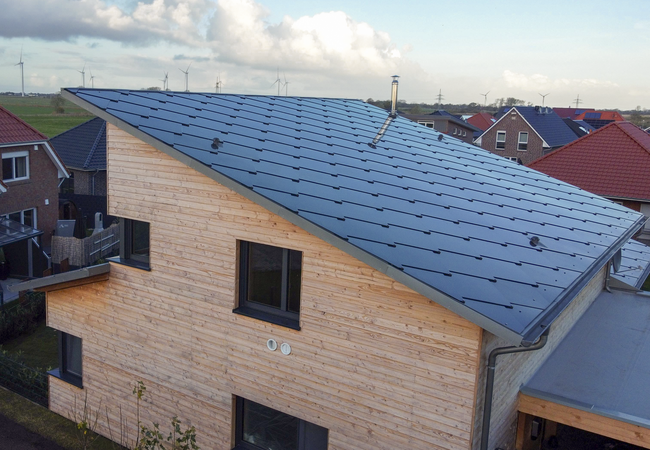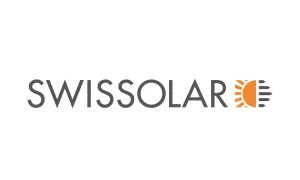Germany set a new record for electricity generation from renewable energies in the second quarter. The share of wind and solar power rose to 65%, compared to 59% the previous year. At the same time, photovoltaic expansion in Switzerland grew by 51% in 2023, with solar energy now covering over 8% of Swiss electricity demand. For 2024, it is expected that solar will cover more than 10% of the annual demand for the first time.
Renewable Energy Growth in Germany and Switzerland
How Renewable Energy Growth is Transforming Germany and Switzerland
From April to June, the feed-in volumes from wind power (both onshore and offshore) and photovoltaic systems in Germany reached a remarkable quarterly high. According to an analysis by the Federal Network Agency on the Smard data portal, the share of renewable energies in total electricity generation rose to an impressive 65%, compared to 59% in the same quarter of the previous year. At the same time, Germany imported 11.1 billion kWh more electricity than it exported during this period.
Photovoltaics Leading the Energy Transition

With 24.3 billion kWh (an increase of 11%), photovoltaics were once again the most significant energy source in the second quarter. Nearly a quarter of the generated electricity now comes from solar systems. Especially in May and June, there was above-average sunshine in northern and northeastern Germany, according to the Federal Network Agency. Additionally, compared to the previous year’s quarter, new solar power plants with an installed capacity of around 10,000 MW were put into operation.
Wind Power on the Rise, Coal Losing Ground
There was also an increase in onshore wind power plants, though with 2,500 MW, it did not match the solar sector. Nonetheless, a series of storm lows in April and June led to a significant increase in wind power generation by 7% to 21.4 billion kWh. Offshore wind farms contributed another 5.3 billion kWh, and hydropower plants added 4.7 billion kWh, an 18% increase compared to the weak previous year.
On the other hand, electricity production from coal reached a record low. The feed-in from hard coal dropped by 38% to 3.8 billion kWh, while lignite-based power generation fell by 18% to 14.3 billion kWh. Natural gas contributed 10.7 billion kWh to electricity generation, representing only a slight decline. Overall, coal and natural gas accounted for 29% of electricity generation in the second quarter, compared to 34% the previous year.
Increase in Electricity Imports, Export Countries, and Trade Balance
Both electricity imports and exports increased compared to the previous year. Imports amounted to 18.1 billion kWh, an 18% increase, while exports reached 7.0 billion kWh. The trade with Belgium was particularly notable: due to the increased price difference—electricity was cheaper in Belgium than in Germany most hours—net imports rose by 431% to 1.2 billion kWh. France remains the largest net importer with 4.2 billion kWh, followed by Denmark and Switzerland, each with 2.7 billion kWh.
The largest net export countries were Austria, Poland, and the Czech Republic, each importing between 0.7 and 0.9 billion kWh. These trade flows underscore the dynamic and changing nature of the European energy market, where Germany plays a central role.
This impressive increase in renewable energies and changes in electricity trade clearly show how Germany is progressing toward a sustainable and environmentally friendly energy future to meet the European Commission’s goals.
Solar Energy in Switzerland: Over 50% Market Growth
On July 11, the Swiss Federal Office of Energy (BFE) published the “Solar Energy Statistics” for 2023. The photovoltaic expansion in Switzerland grew by 51% to 1,641 megawatts (MW). For the fourth consecutive year, the market grew by over 40%. By the end of 2023, the installed 6.4 gigawatts (GW) of solar panels covered over 8% of Swiss electricity demand. For 2024, it is expected that solar energy will cover more than 10% of demand for the first time, surpassing the Beznau nuclear power plant.
Your Solar Roof: Contribution to a Sustainable Energy Future
The impressive rise in renewable energies clearly shows that the energy transition is in full swing. Especially photovoltaics have taken a leading role in the second quarter through record feed-in. This positive trend also offers individuals an excellent opportunity to contribute to a sustainable energy future.
With your own solar roof, you can not only reduce your energy costs but also actively contribute to the further increase in the share of renewable energies. Take the opportunity to become part of this movement and invest in a sustainable future—your own solar roof is the perfect start.
Would you also like to invest in solar energy? We are happy to advise you.
For more information about SunStyle’s solar roof, visit sunstyle.com
Power your interest in the future of solar roofing by following us:
Instagram @sunstyle_solar
Facebook @sunstylesolar
LinkedIn linkedin.com/company/sunstylesolar
Youtube @youtube channel


